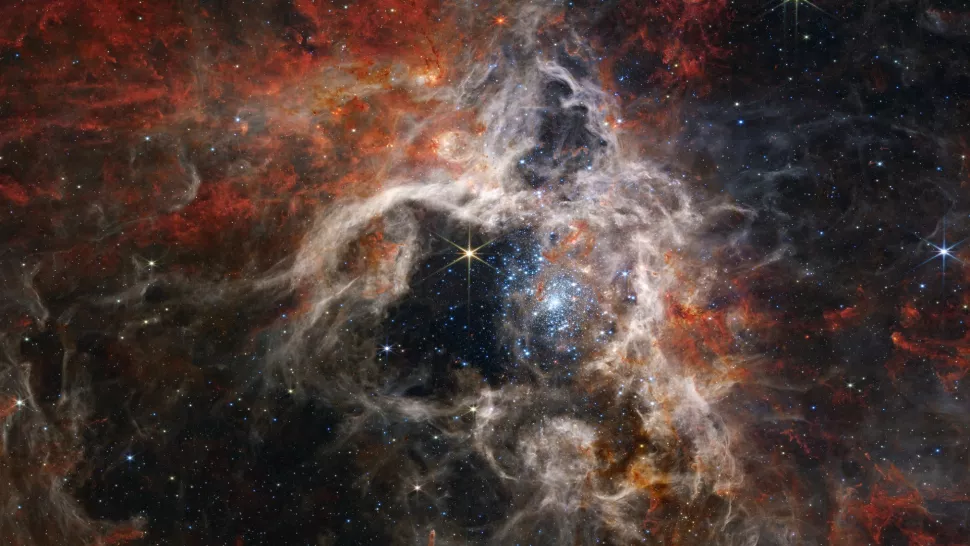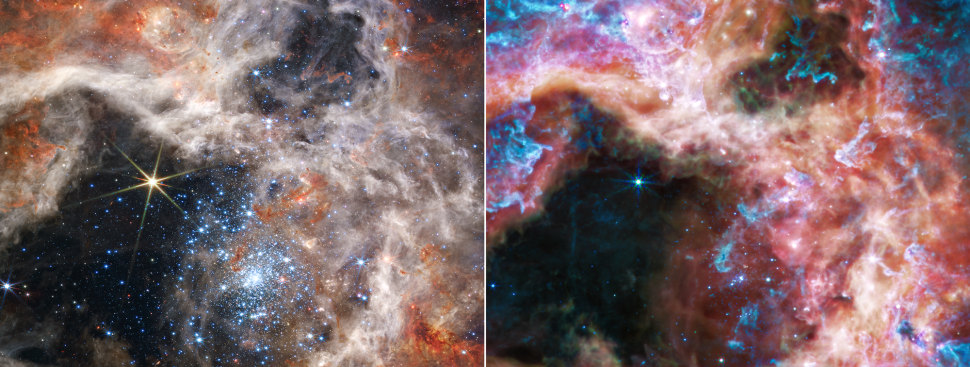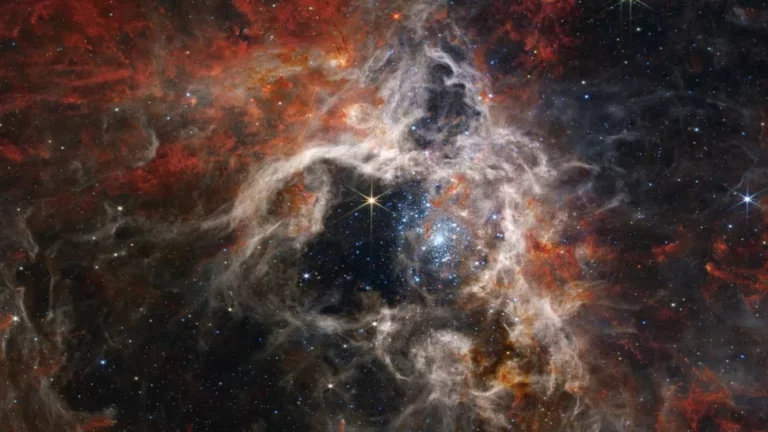Tarantula Nebula is captured in a mind-blowing photograph by the James Webb Space Telescope.
The James Webb Space Telescope has captured new imagery of stellar nursery 30 Doradus, nicknamed the Tarantula Nebula. It can be found 161,000 light-years away in the Large Magellanic Cloud galaxy.
Webb has revealed new details of stellar nursery 30 Doradus, known as the Tarantula Nebula.

A magnificent and first-ever glimpse of the Tarantula Nebula, an area where stars are still forming, has been provided by the James Webb Space Telescope.
The James Webb Space Telescope’s high-resolution infrared sensors work together to show hundreds of newborn stars in the stellar nursery, officially known as 30 Doradus, that have never previously been observed.
The $10 billion space telescope’s astounding new detail reveals gas and dust in the nebula as well as far-off background galaxies.
Doradus 30, which was previously known as Tarantula because to its spider-like look, can now be observed to also resemble a silk-lined burrowing tarantula’s cave thanks to the excellent new detail in the photograph.
The image is the most recent in a string of breathtaking ones from JWST, which was launched on Christmas Day 2021 and first showed its photographs in July. Recent pictures show a “Einstein ring” in perfect shape.
The brightest star-forming area in the Local Group of galaxies closest to our Milky Way is the Tarantula Nebula, which is 161,000 light-years distant in the Large Magellanic Cloud.

Astronomers interested in the formation of stars are particularly interested in the nebula. The nebula provides a unique window into how stars evolved in the far distant past because it has a chemical makeup with star-forming areas from when the universe was just a few billion years old.
JWST is a joint venture between NASA, the Canadian Space Agency, and the European Space Agency.
Source: SpaceCom
Do not forget to share your opinion with us to provide you with the best posts !




Everything is very open with a very clear
explanation of the challenges. It was truly informative.
Your website is useful. Thank you for sharing!
Wonderful site you have here but I was wanting to know if you knew of any discussion boards that
cover the same topics discussed in this article?
I’d really like to be a part of online community where I can get responses
from other experienced people that share the same interest.
If you have any suggestions, please let me know.
Cheers!